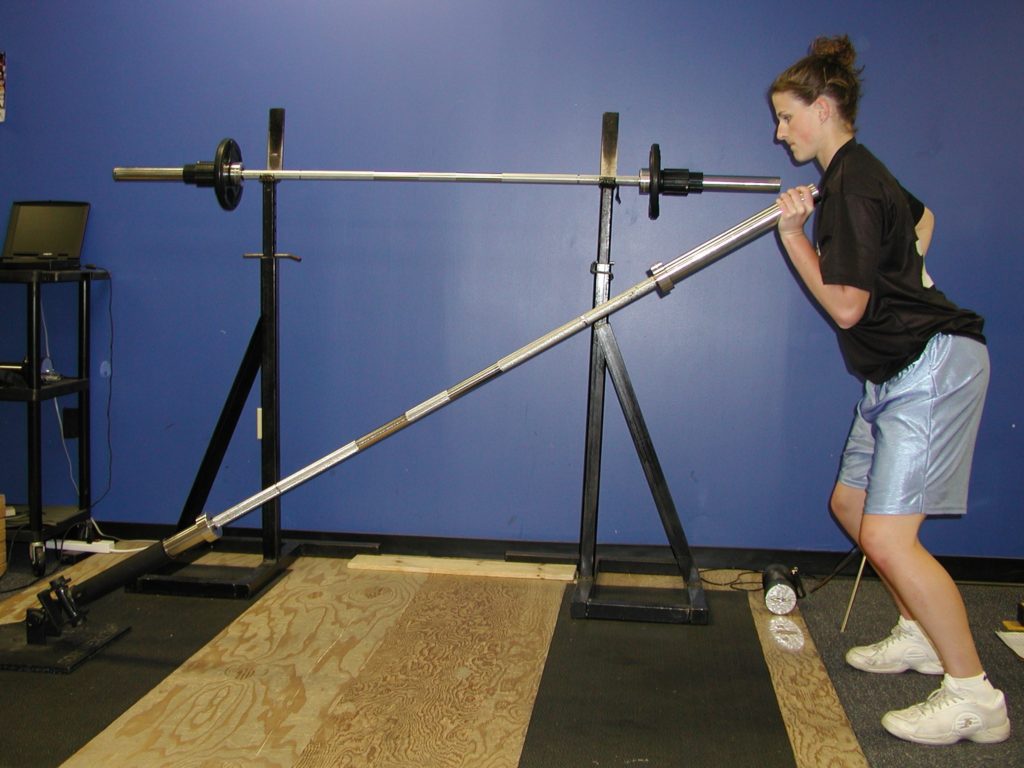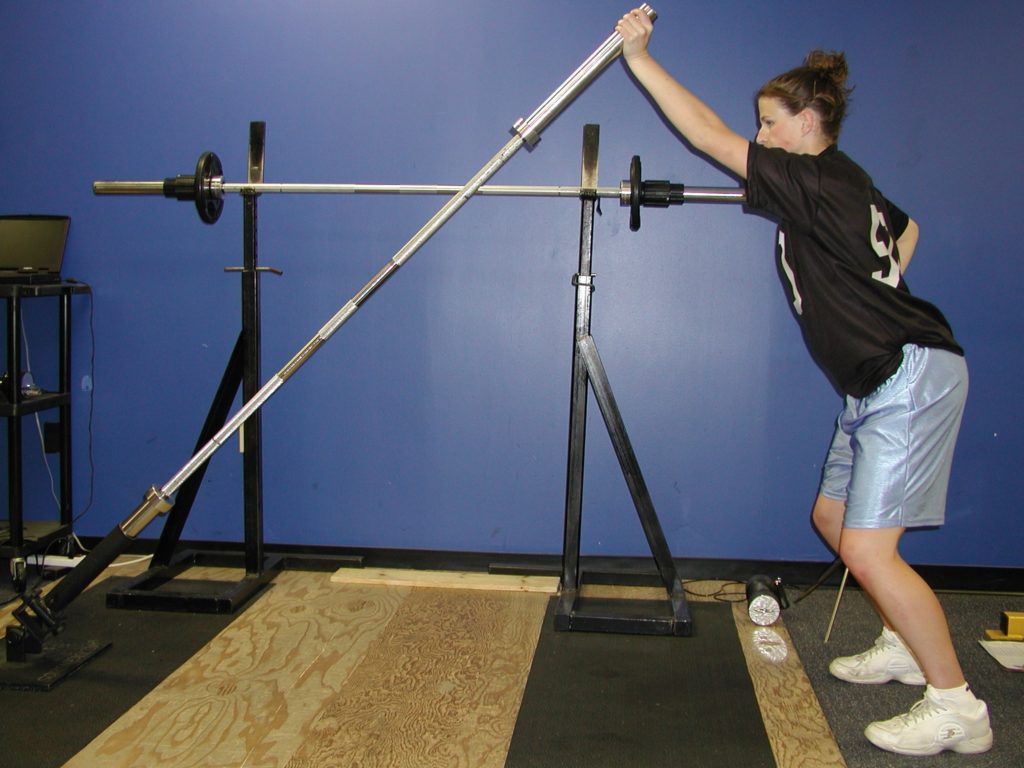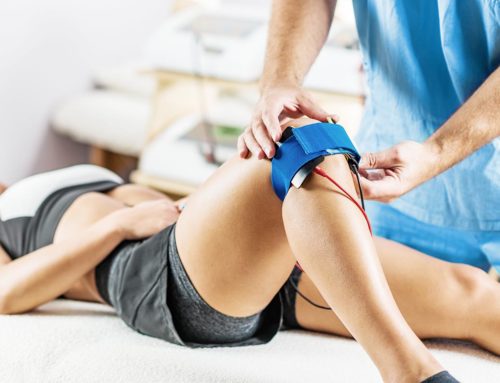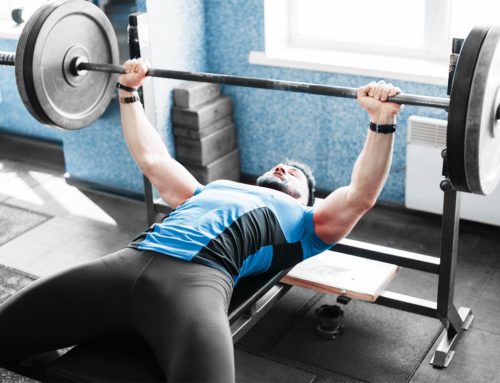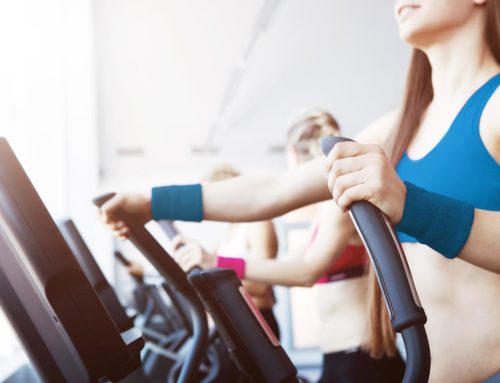Rotation Around The Core
Strength Tek
By Lorne Goldenberg BPE, CSCS, CEP
In sport and daily life, one of the most important movements that the body generates is rotation around the spine, also referred to as movement in the transverse plane. Athletes who have great rotational movement and strength generally are recognized as powerful athletes. The Tasmanian Devil, Bugs Bunny’s predator, possesses such rotational strength that he can actually bore deep into the ground on command. It is his advanced nervous system that allows him to do this, one that all athletes would like to posses. Taz’s powerful rotation like movement could benefit many different sports, a few examples would be:
- Baseball – The pitch, the swing of the back
- Hockey – The slap shot
- Football – The battle of the linemen
- Tennis – The serve
- Golf – The swing
In daily life we also have many instances of rotation about the spine:
- Getting out of a car
- Moving groceries from the cart to the car
- Racking leaves
- Taking out the garbage
These are but just a few examples of rotation about our spine. From an anatomical perspective the trunk and torso transfer and stabilize all forces generated by the upper and lower body musculature in many planes and angles. So the core of our body must contribute to force generation and the transfer of forces throughout our body. This is very important in sports where an implement like a bat or stick is being utilized.
We as humans must take advantage of our “anatomical trains”, as described by Thomas Myers as the front and back functional lines. As you can see from the two diagrams below, in the front of our body there is a definite line that connects our core to our lower body, and not only is it a mechanical linkage, but there is also muscle fiber orientation for that direction of movement. This is very apparent in the line of pull for the external obliques on the right side of the body and the adductors on the left side. Similarly in the back this can be seen from the left latissimus dorsi and the right gluteal.

The Front Functional Line

The Back Functional Line
Training the Integrated Core Through Rotation
Now that we have a basic understanding of the functional anatomy and movements lets have a look at a couple of excellent strength ball exercises that requires integration of all the core musculature.
Medicine Ball Single Leg Balance L to R exercise
Left to Right exercise produces excellent balance and proprioception responses while overloading the core. The deep abdominal wall and core abdominal muscles contribute through eccentric loading, stabilization and concentric action.
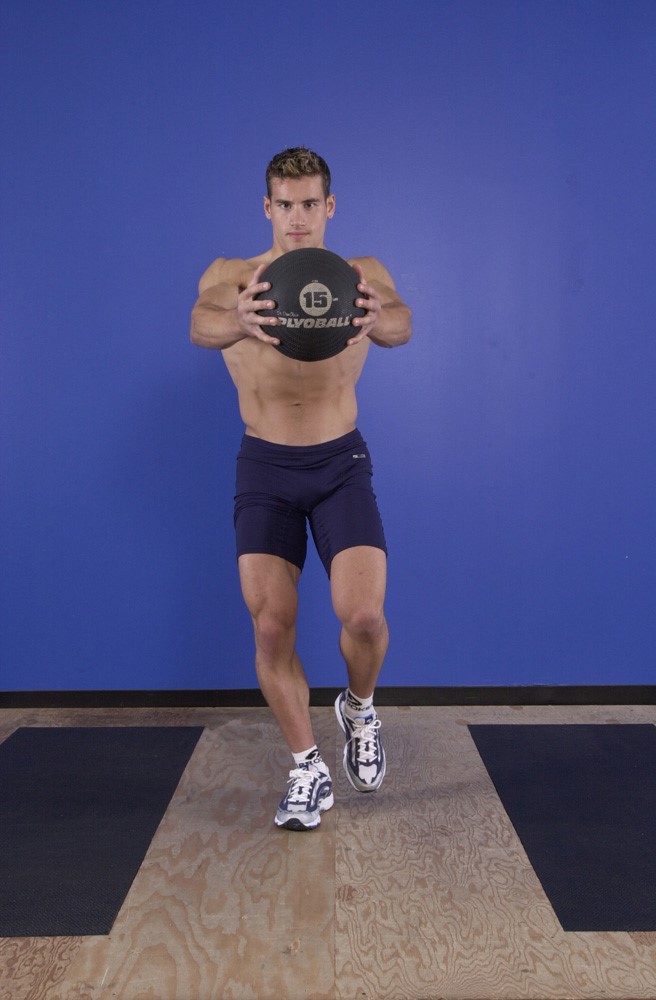
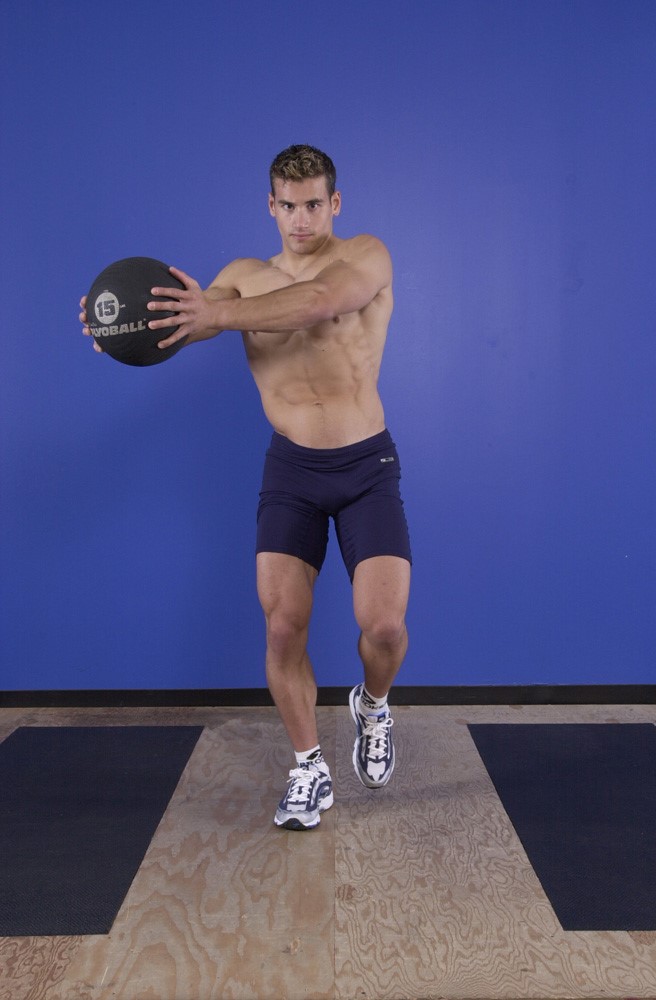
Setup
Stand on one leg, knee slight flexed. Set the abdominals and focus on balance. Hold the ball with two hands in front of your body.
Movement
Move the ball over to the left side of your body, but do not rotate the torso. The torso and shoulders should remain square, facing straight forward. Move the ball back across the body and over to the right side of the body.
Finish
Continue to move the ball alternatively from left to right sides of your body, reacting to the changing load position by contracting the abs, hips and legs.
Advanced Progressions
- Increase the speed of movement.
- Move the ball further away from the body, further off to the side and further in front of the body upon rotation.
- Toss the ball from left hand to right hand. Catch and absorb with the arm, core and leg. This increases the balance challenge and also increased the loading on the abdominals. Rapid fire toss – move the ball from left to right hands as quickly as possible.
Standing Stability Ball Rotation
Rotation while both feet are in contact with the floor is one of the most natural movements in sport. This exercise can be executed with a cable, or tubing.
Setup
Ensure that cable is adjusted to a height so that during movement, is stays parallel to the ground. When turning to the left, grasp the handle with the left hand, with the arm at the mid point of the ball, as in picture 1. The right arm is also placed across the ball, just above the cable to act a safety guide as in picture 2. Hips should be back, with knees slightly bent, and shoulders forward as in picture 3 side view.
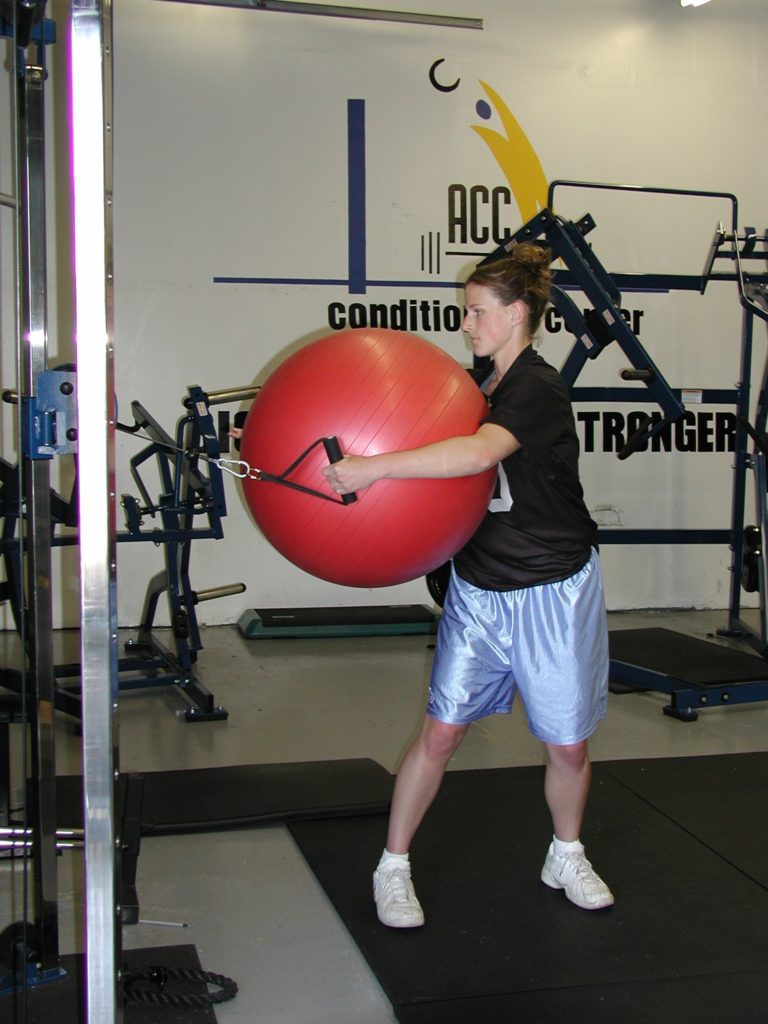
Picture 1 Start
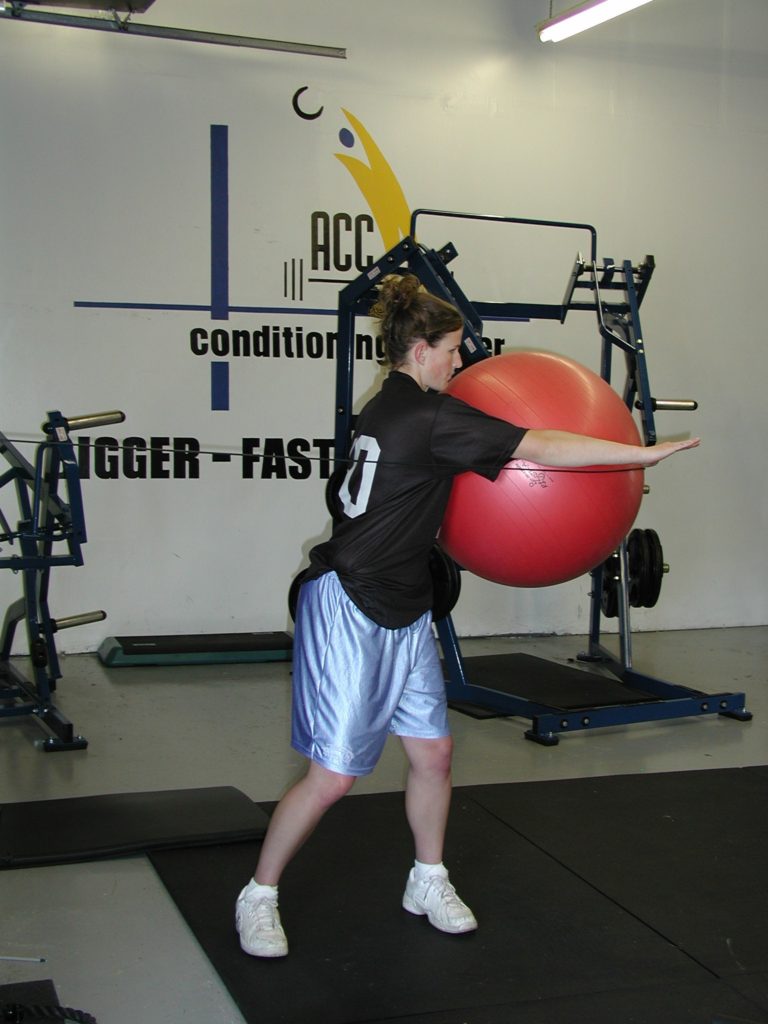
Picture 2 End
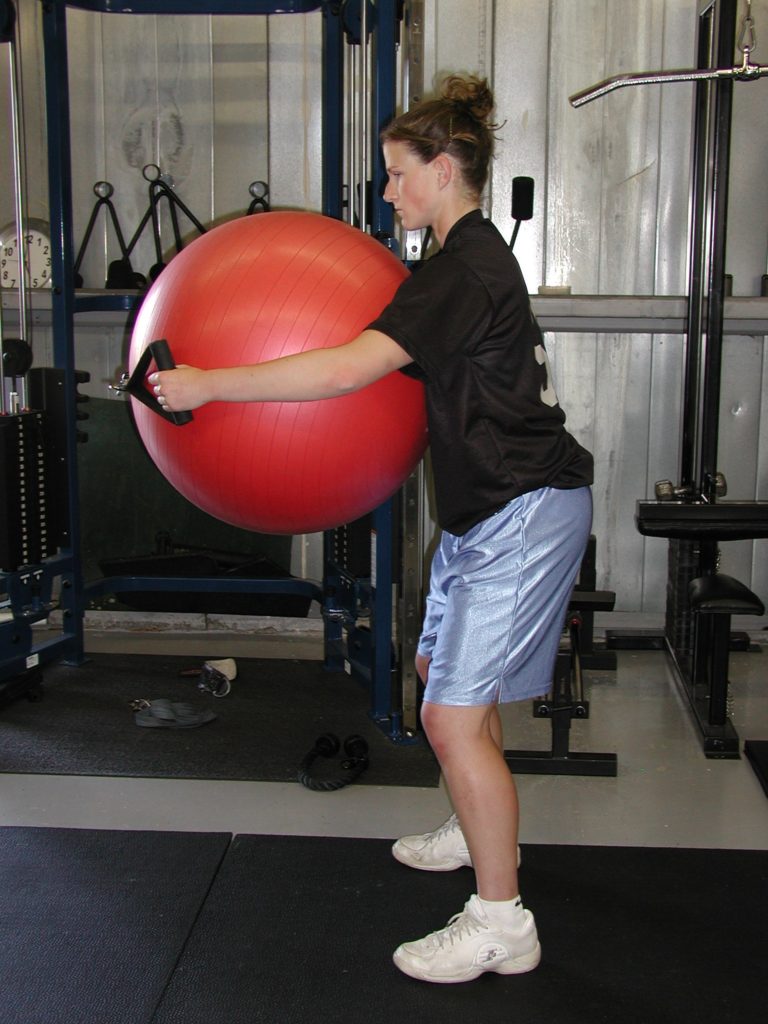
Picture 3 Side View
Movement
Posture and foot position should be maintained as your core rotates to the opposite side. It is key that as you rotate that you keep you eyes on the ball, and your head rotates along with the rest of your core.
Finish
Continue to rotate until you have maximized your range of motion. After completing required number of reps to one side, continue on the other.
Advanced Progressions
- Standing on bosu.
- Single leg stance.
Single Arm Standing Bar Press
Although this exercise has its prime movers in the chest and shoulder region, the core receives a great amount of work during this movement. The result is what I have termed as static rotation. With the use of single arm movements against resistance, there is a significant requirement of the core to fire and stabilize the hips and upper body to produce the pressing movement.
Setup
Place the end of a bar against a wall and move back into a position that allows your body to be in a good athletic stance, with the hips back, knees bent, and the shoulders forward.
Hand should be placed at the top end of the bar, with opposite arm at your side, or hand placed over the abdominals to feel for core activation.
Movement
Ensure that your core is activated, then slowly extend your arm. Pause for a second then return to the starting position. Keep in a neutral position and focus forward.
Progressions
- Increase weight
- Increase speed of movement
